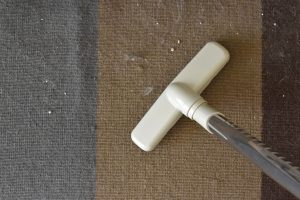Do you have, or are you thinking of purchasing, clay cat litter? You may be wondering if this type of litter is environmentally safe. This article will discuss if clay cat litter is compostable and more.
Clay cat litter is not compostable. Clay-based litter cannot break down within compost and can leave behind harmful chemicals in the process.
How do you dispose of it if you can't compost clay cat litter? Keep reading as we answer how to dispose of clay cat litter the green way, and if it is safe to put used clay litter in the garden.
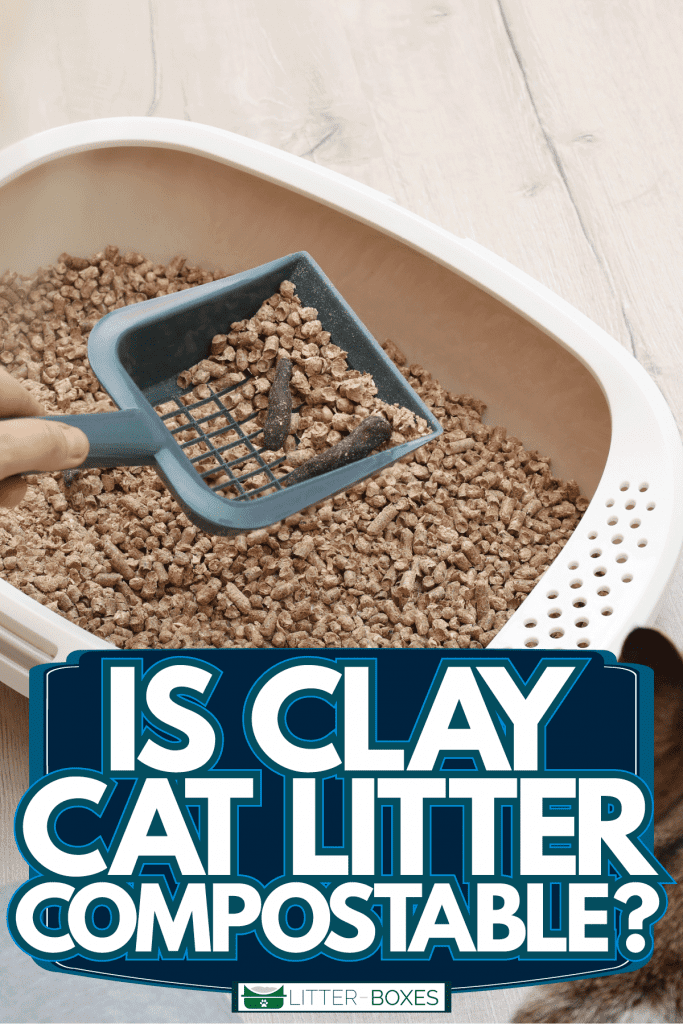
Why You Can't Compost Clay Cat Litter
Now you know that you cannot compost clay cat litter. If you're a cat owner who is also looking out for the environment, you probably wonder why it can't be done.
You can compost some cat litters, but clay litter is not one of them. This is because clay-based litter cannot break down further. The inability to break down can start to damage your soil within the compost.
Furthermore, the chemicals and synthetic toxins clay litters can start to release would be harmful to your compost and anything your compost gets added to. You should be familiar with the ingredients and chemicals inside with any litter you are using.
The majority of clay litter are made up of bentonite clay, zeolite, diatomite, and sepiolite. Unfortunately, zeolite and diatomite have known toxicities to humans, making it dangerous to have these elements in your compost.
Toxicities of diatomite and zeolite include lung irritation and cancers when inhaled.
On top of clay toxicities, your cat's feces can contain bacteria and parasites. Out of all the possible bacteria found in feces, Toxoplasma gondii is the one to worry about in your cat litter.
The possibility of getting this bacterial infection is another reason why you cannot compost clay cat litter.
Learn more on our blog post, "Kitty Litter That You Can Actually Compost [3 Types Revealed]."
Is Clay Cat Litter Biodegradable?
Material labeled biodegradable, means that it can be broken down or decomposed by microorganisms like bacteria or fungi. Clay cat litter cannot break down, so it is not considered biodegradable.
This everlasting material gets looked at as not good for the environment. Even when disposed of properly, the inability to break down means it can pile up in landfills over time.
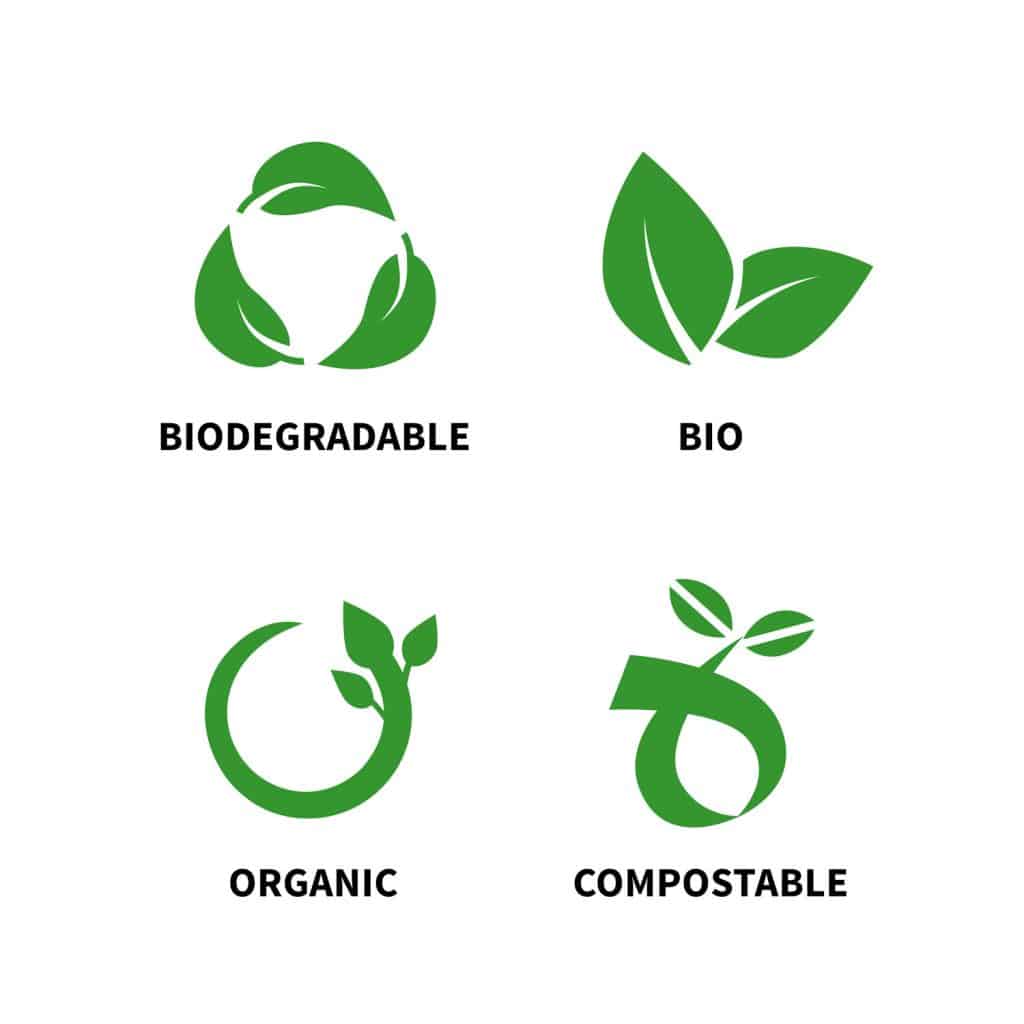
Additionally, environmentalists even go as far as questioning the safety of mining the clays used in these litters. They argue that strip mining requires a large amount of vegetation and wildlife to be removed.
Clay cat litter may be the farthest away from biodegradable as you can get in the world of cat litter. However, it is one of the first forms of cat litter to become popular after sand.
There is a lot of convenience and reputable brands tied to clay cat litter. If you wonder why many cat owners, including you, still reach for clay brands, knowing the environmental effects, this is why.
While clay cat little is not biodegradable, there are many litters available that are. Some examples are wood or paper-based litter. Do your research and experiment with varying litters to find a product that works for both you and your companion.
Read more on our blog post, "8 Types Of Biodegradable Cat Litter (Including Pros And Cons)."
How Do You Dispose Of Clay Cat Litter?
The easiest and top recommended way to dispose of clay cat litter is to scoop it into a strong garbage bag or litter liner. This bag then gets left in an outside garbage bin.
You can scoop your clay cat litter daily to reduce odors and keep your cat happy. Additionally, you'll want to change out the litter entirely once a week.
Depending on the clay litter you are using, and if it is clumping litter, you may be able to go longer before a full change.
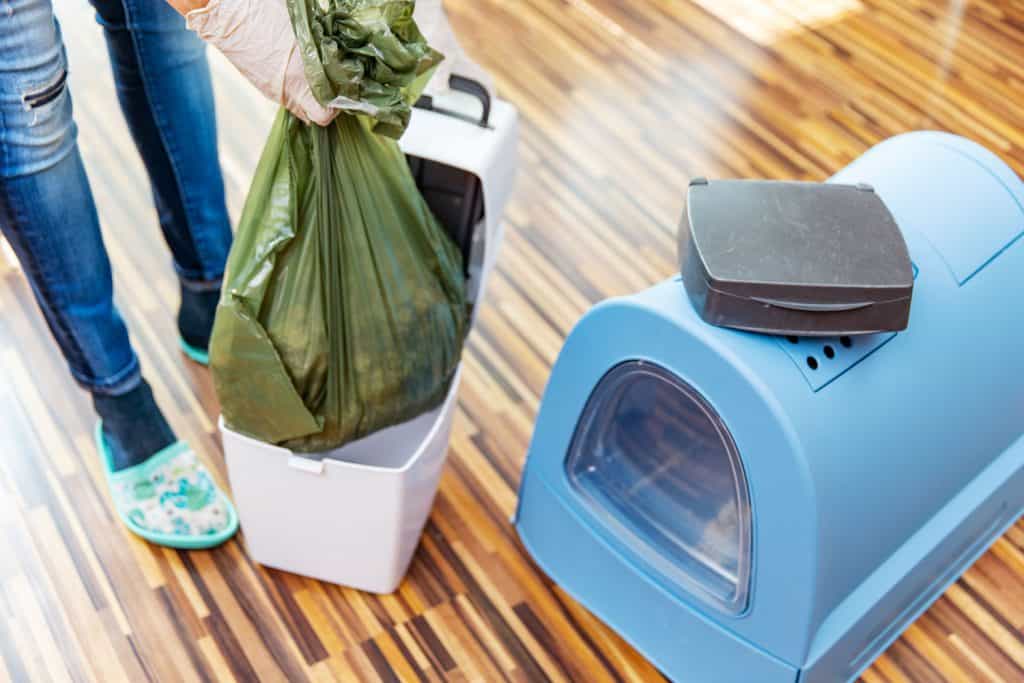
Bagging your clay litter in a separate bag before adding it to the rest of your garbage is useful because clay litter is heavy. Having it in its bag reduces the chance of the weight ripping your garbage bag and creating a massive mess.
Clay cat litter should never be placed in the recycle bin or flushed down the toilet. This type of litter is not recyclable and can damage or clog pipes and septic tanks if put down the toilet.
Additionally, clumping clay litters pose an even higher risk of clogging pipes or drains. The high absorbency and ability to expand are responsible for this.
Even if your cat litter has a label that reads "flushable," avoid putting any litter in the toilet. The type of litter may not have the potential to create clogs, but you still run the risk of contaminating a water supply.
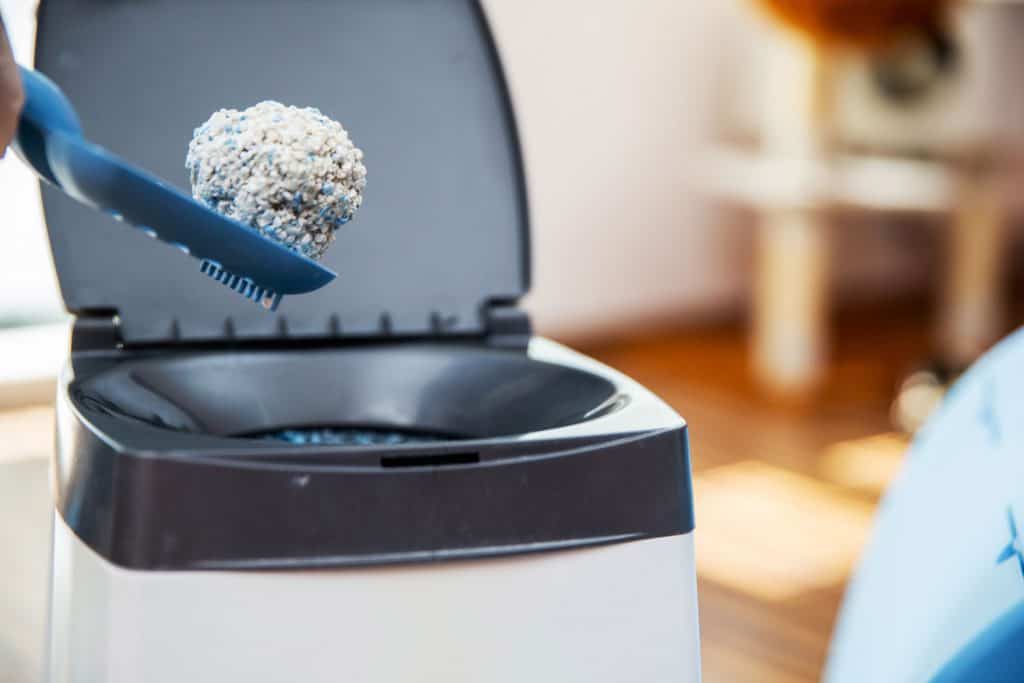
Furthermore, litter box liners can make disposing of clay cat litter a little easier. When you notice the litter is ready to be changed, lift the litter liner with the litter, tie it up and place it in the garbage.
You can find heavy-duty litter box liners here on Amazon.
How To Dispose Of Clay Cat Litter The Green Way
Used clay cat litter has nowhere to go except the trash. One way to make this process a bit more green is to place the litter in paper bags over plastic ones. At least the bags are biodegradable.
There are bags sold as biodegradable, but their legitimacy can be questionable. Paper bags are cheap, and you know they will break down.
The greenest way to deal with clay cat litter is changing your litter altogether. If you genuinely want to make a change that is good for the environment, consider switching over to a biodegradable cat litter.
Look for materials like wood shavings, paper, corn, sawdust, or materials like these. It might take a few tries and a couple of litters, but you are bound to find something that works for your cat, you, and the environment.
Have a look at this corn-based cat litter here on Amazon.
You can go the extra mile and use biodegradable litter boxes as well. They can be found in your local pet store or online, and are typically made from recycled paper. Enjoy the easy clean-up and additional odor control.
Amazon offers a set of these disposable litter boxes here.
There can be a lot of plastic involved in cat care if you allow it. However, with just a little effort, and sometimes, at extra costs, you can reduce your carbon footprint. All the while, your cat will remain just as happy.
Read more on our blog post, "How Often To Change Clay Cat Litter?"
Can You Put Used Clay Cat Litter In The Garden?
You cannot put used clay litter in the garden. Remember how we mentioned clay litter wouldn't break down in compost? Well, it certainly won't break down in the garden either.
Not only that, if you have edible items in your garden, it is hazardous to put used cat litter in the soil. The bacteria and parasites can affect your soil and food, leading to you getting ill.
On the other hand, clay cat litter that is unused can be helpful in the garden. Some gardeners place a ring of this litter around the plants they want to protect from snails and other pests.
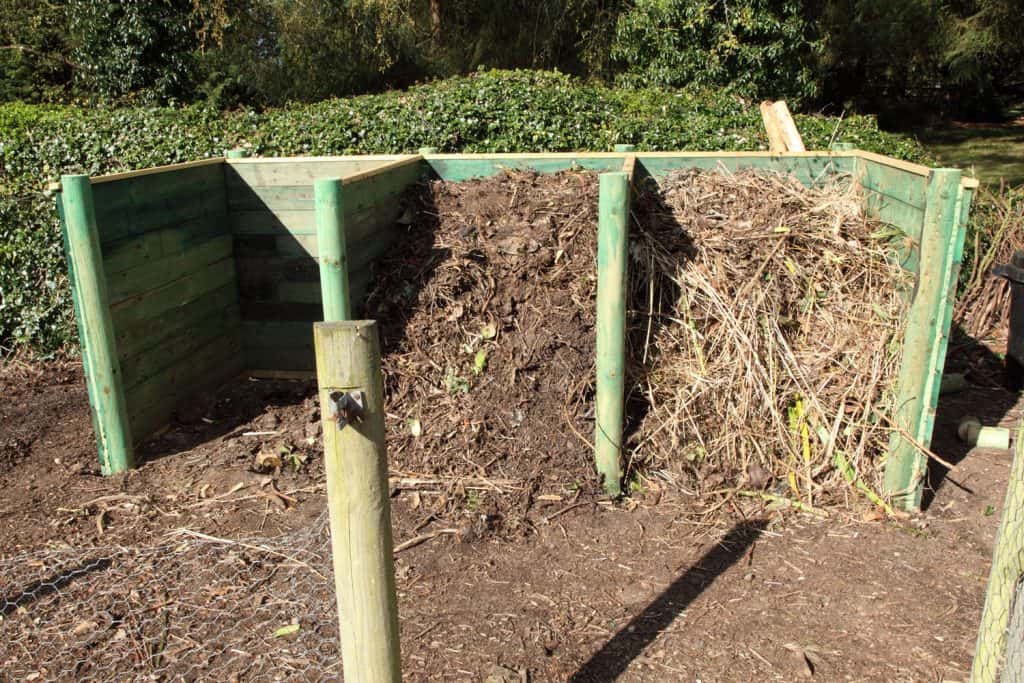
What about litters labeled biodegradable or compostable? Can these go in the garden? The answer is still no. Even compostable litter can only be used on lawns or non-edible plants.
If you're adamant about utilizing compostable litter, you can contact a compost expert for advice on composting feces like this. Typically, you'll need to wait a long period, allowing heat and time to kill any present pathogens, before you use the compost.
Even so, the process cannot be done with clay cat litter. Only biodegradable litter options are viable for a compost project.
In Summary
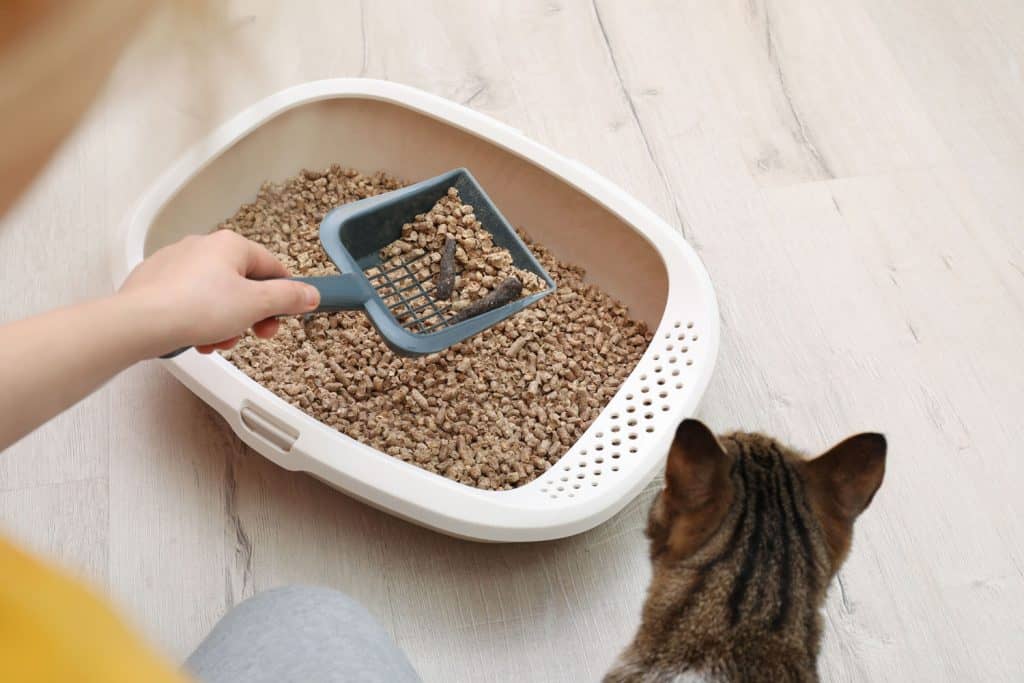
Clay cat litter is not compostable and not environmentally friendly from any aspect. However, there are many litter options available that do meet these criteria. We hope you found this article insightful regarding the characteristics of clay cat litter.
Are you looking for other types of cat litters available to you? Have a look through our blog post, "The 7 Types Of Cat Litter Every Cat Owner Must Know".

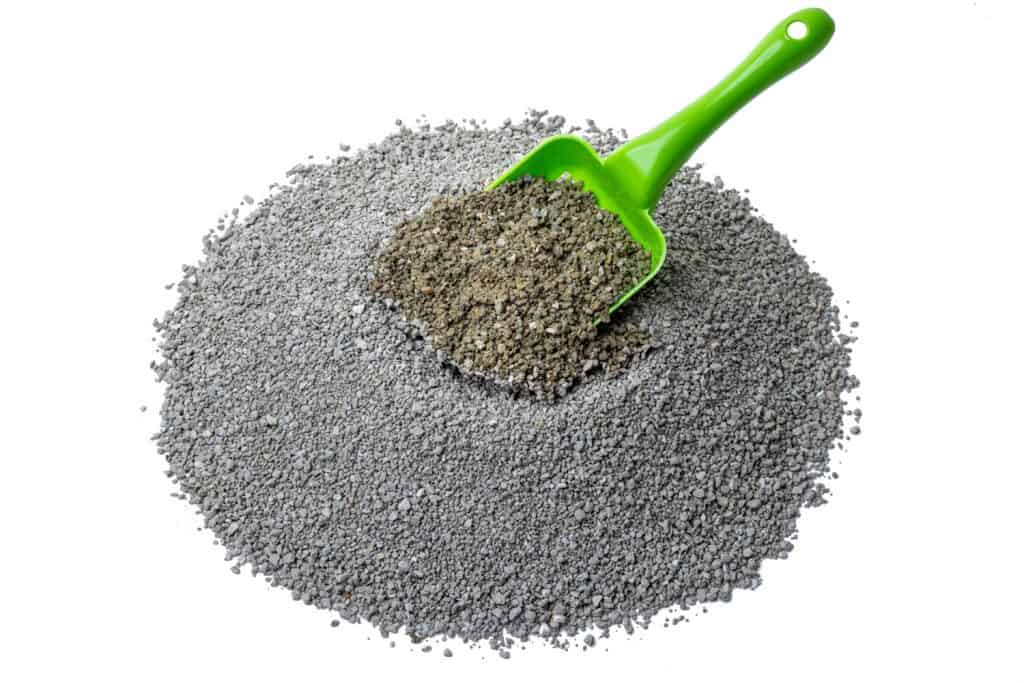



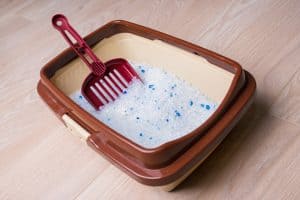
![cat examines kitty litter box with eco-friendly silicate litter - Can You Wash and Reuse Crystal Cat Litter? [Answered]](https://litter-boxes.com/wp-content/uploads/2023/08/cat-examines-kitty-litter-box-with-eco-friendly-silicate-litter-300x200.jpg)
